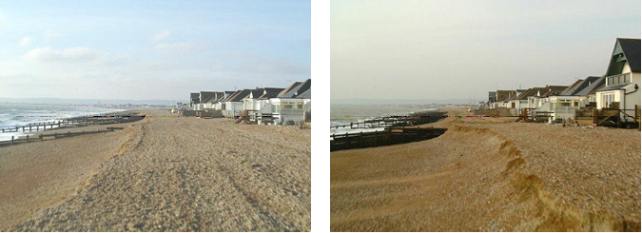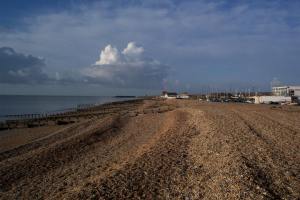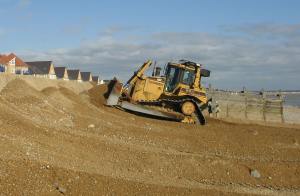Reprofiling
During winter storms beach material can be quickly lost from the beach crest and deposited on the lower beach (the photos below show crest recession in February 2002 at Beachlands).

 If left alone the sea will return it to the upper beach, depositing it in ridges that mark the extent of different tides. However, this process can take weeks, during which time depleted areas are vulnerable to further attack. Because the material is not lost, but drawn down towards the toe of the beach, much of it can be recovered by bulldozers pushing it back up up to the crest. This helps to:
If left alone the sea will return it to the upper beach, depositing it in ridges that mark the extent of different tides. However, this process can take weeks, during which time depleted areas are vulnerable to further attack. Because the material is not lost, but drawn down towards the toe of the beach, much of it can be recovered by bulldozers pushing it back up up to the crest. This helps to:
- maintain the integrity of the defences
- reduce the amount of shingle available to drift from west to east
- protect crest top properties
Reprofiling is needed where the crest is narrowed or cliffed after a storm and may therefore be carried out anywhere along the frontage. We only do work that is necessary and have to strike a balance between natural and induced beach recovery. It may be several days after a storm before some areas are re-instated. Areas where most reprofiling occurs are:
- East of the rock revetment at Sovereign Harbour
- Beachlands
- Normans Bay East
Working patterns are dependent on the tide and can usually only be carried out during the three hours either side of low tide, which means that this routine maintenance will start as early as 5am ... or finish as late as 10pm. After major storms bulldozers work whenever they can get on the beach.





